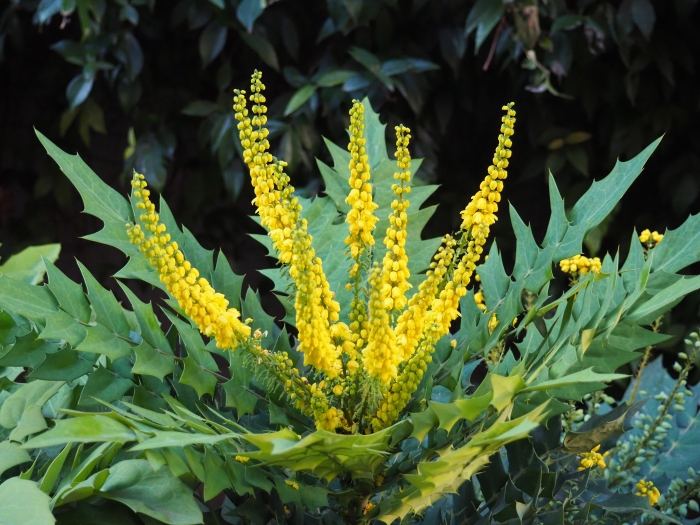Japanese Mahonia
(Mahonia japonica)
Japanese Mahonia (Mahonia japonica)
/
/

Teresa Grau Ros
CC BY-SA 2.0



























Estimated Native Range
Summary
Japanese Mahonia is a versatile plant in the landscape, often used for ornamental purposes, in shaded borders, and as a security feature. It thrives in part shade to full shade, requiring low to medium amounts of water, and is adaptable to a range of soil drainage conditions, from slow to fast. While it is generally low-maintenance, it can be susceptible to rust and leaf spot diseases. Gardeners should also be aware that the spines can make handling the plant difficult. Despite these issues, its ornamental appeal and utility in shaded garden areas make it a popular choice.CC BY-SA 4.0
Plant Description
- Plant Type: Shrub
- Height: 5-7 feet
- Width: 7-10 feet
- Growth Rate: Moderate
- Flower Color: Yellow
- Flowering Season: Spring, Winter
- Leaf Retention: Evergreen
Growth Requirements
- Sun: Part Shade, Full Shade
- Water: Low, Medium
- Drainage: Slow, Medium, Fast
Common Uses
Bank Stabilization, Bee Garden, Bird Garden, Border Plant, Butterfly Garden, Deer Resistant, Drought Tolerant, Edible*Disclaimer: Easyscape's listed plant edibility is for informational use. Always verify the safety and proper identification of any plant before consumption., Fragrant, Hedges, Hummingbird Garden, Low Maintenance, Rabbit Resistant, Salt Tolerant, Showy Flowers, Street Planting
Natural Habitat
Understory of mixed forests in East Asia
Other Names
Common Names: Leatherleaf Mahonia, 十大功勞, 뿔남천
Scientific Names: , Mahonia japonica, Ilex japonica, Mahonia tikushiensis, Berberis tikushiensis, Mahonia japonica var. gracillima, Aquifolium japonicum, Berberis japonica subsp. gracillima, Berberis japonica var. gracillima, Mahonia japonica subsp. gracillima,
GBIF Accepted Name: Mahonia japonica (Thunb.) DC.